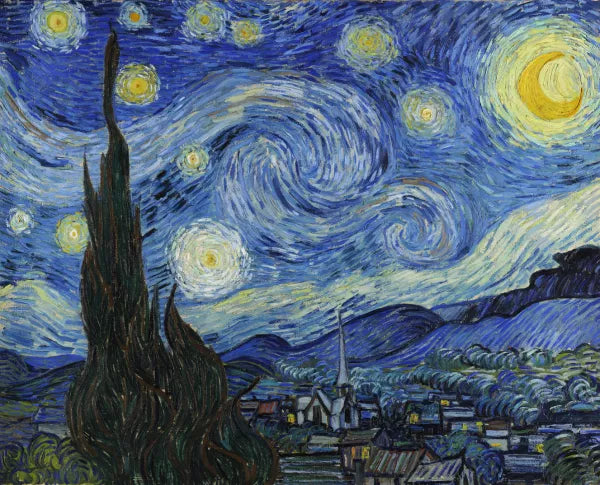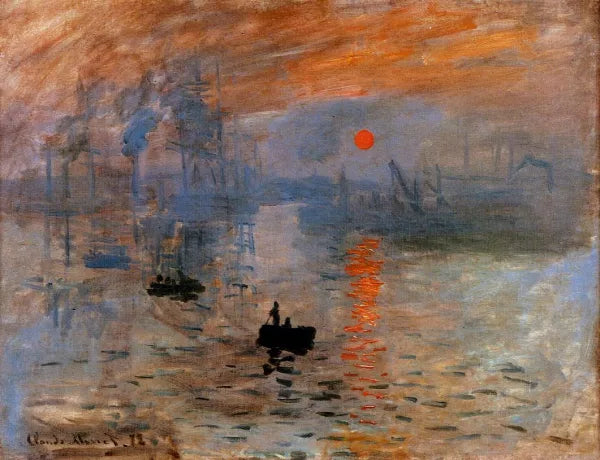Good oil painting care and cleaning is mostly restraint. The less you fuss, the longer a hand-painted oil painting keeps its color, texture, and quiet presence. Here’s a calm, story-like guide that folds maintenance, placement, cleaning, and moving into one flow you can actually live with.
Where to Hang Oil Paintings: Placement and Environmental Control

Before anyone reaches for a brush, make sure the painting “lives” in a stable part of the house.
Indirect daylight is kinder than a bright beam; steady rooms are kinder than hot-cold corners. Aim for a comfortable 18–24°C (65–75°F) and relative humidity around 45–55%, but don’t chase numbers—avoid big swings.
Keep distance from radiators, fireplaces, AC vents, exterior walls that sweat in winter, kitchens with grease, and bathrooms with steam. A few felt bumpers on the back of the frame let air move; a paper dust cover keeps grit and insects out. On smaller works, optional UV-filter glazing with spacers protects the varnish without touching the paint.
Get the home decor right, and half the conservation is done. This is the first step in how to prevent cracks in oil paintings.
Safe Oil Painting Cleaning: Dry Dusting Techniques
At home, “cleaning” usually means dry dusting now and then. Think in rhythms. Once a month, take thirty seconds to look at the surface in good daylight. Every three to six months, if you see buildup, give the painting a light pass with a very soft, clean brush reserved only for art—a goat-hair hake, a soft squirrel brush, or a clean, fluffy makeup brush. Keep the work vertical; turn off fans; put on clean nitrile gloves. Stroke in one direction, top to bottom, no circles, no pressure.
Frames can be wiped with a dry microfiber cloth, but keep cloth and fingers off the paint.
If a task seems to need liquid, stop. In oil painting care and cleaning, dryness is safety.
What Should You NEVER Use to Clean Oil Paintings?

Street Cleaners, Washington Square by William Glackens
Water leaves tide lines and can blanch varnish. Household cleaners—glass spray, vinegar, baby wipes, furniture polish, alcohol—can soften or stain the varnish and wake the pigment below.
Internet "oil painting cleaning hacks" that use bread, potatoes, olive oil, or saliva add starch, moisture, or residue that attracts dust, insects, and regret. Always AVOID these common mistakes when cleaning an oil painting.
If something splashes the surface, don’t wipe. Move the painting to a calm room, let it air dry face up, and speak to a conservator.
Wondering whether water or alcohol are ever safe? Read: NEVER Use Water or Alcohol to Clean Oil Paintings: Safe Dusting & Repair Guide
When to Call a Conservator: Yellowing, Cracking, and Professional Cleaning

Not every change is dirt. In raking light, a uniform yellow cast is often aged varnish; a milky haze after humidity is varnish bloom; tiny lifting flakes are active paint failure. Smoke, nicotine, soot, and mold make sticky or granular films that home tools can’t lift safely.
These are not DIY projects. What you can do is stabilize the room, photograph the issue in daylight, and arrange for professional oil painting restoration. The boundary is simple: dry dusting at home; solvents, stains, flaking, or yellowed varnish with a conservator.
Not sure if your painting needs professional help? See: Oil Painting Restoration: When to Call a Conservator & How to Spot Real Damage
How to Prevent Cracks in Oil Paintings (Humidity Control)
Cracking and cupping happen faster in rooms that swing between dry heat and damp cool. Keep oils away from heat sources and sunstruck walls, and don’t hang above a radiator or stove.
Make sure hanging hardware is solid so the work doesn’t flex each time a door slams. If you love a bright window, use translucent shades to soften the light; enjoy the painting under a warm picture light at night, when brush texture glows without UV.
See our full humidity control guide: Oil Painting Crack Prevention: Humidity Control, Placement, & Long-Term Stability
How to Move and Transport Oil Paintings Safely
Moving is when most damage happens. Clear a landing spot before you lift. Wear gloves; handle the frame, not the canvas. Add corner protectors, cover the front with archival glassine, then wrap in bubble wrap with the bubbles facing outward.
Sandwich the work between two rigid foam boards, tape to the frame (not the paint), and box it. Transport upright, wedged so it can’t slip, and never leave it in a hot or freezing car.
For storage, keep it upright in a cool, dry room—not a basement or attic—and check it now and then like you would a good coat.
For long-term protection or moving across homes, read: Oil Painting Storage & Transport Guide: Safe Packing for Long-Term Preservation
Oil Painting Maintenance Schedule: Small Habits, Big Payoff

Watching the Artist in the Rockies by De Witt Clinton Boutelle
A simple drawer near your tool kit can hold everything you’ll ever need: one soft brush for the paint surface, a microfiber cloth for frames only, nitrile gloves, corner protectors, archival glassine, acid-free backing paper, felt bumpers, spare hanging wire, and maybe a small picture light. What you don’t need: feather dusters (they snag), canned air (it drives grit into cracks), and any cleaner meant for kitchens or windows.
A gentle rhythm to remember: Most weeks, do nothing—just enjoy the art. Each month, take a slow look in good light. Every quarter, give a soft brush pass if needed and check the bumpers and wire. Once a year, make sure the location still makes sense: no new sun path, no new heat source, no slow damp patch on the wall. Deep work—varnish removal, soot, mold, flaking—belongs to conservation, not housekeeping.
Need a detailed cleaning frequency checklist? See our full guide: Hand-Painted Oil Painting Care Schedule
Closing thought
Care is quiet. Place the painting where the room is calm, keep the climate steady, dust lightly when it needs it, and resist the urge to fix with liquids. Do that, and a hand-painted oil painting will keep its color, depth, and human touch—still alive each time the light changes.
Explore our hand-painted oil painting replicas and find a masterpiece built to last — Oleo Arts



